Nikki Keddie on Iran
In "Bitter Friends, Bosom Enemies," Barbara Slavin, a leading Middle East reporter for USA Today, offers a refreshingly nuanced and revelatory taxonomy of power within theocratic Iran that sheds light on its leaders and their ambitions.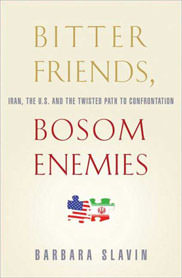
Barbara Slavin, Middle East reporter for USA Today and fellow at the U.S. Institute of Peace, has written in “Bitter Friends, Bosom Enemies: Iran, the U.S. and the Twisted Path to Confrontation” a highly readable and informative book on contemporary Iran and U.S.-Iran relations. Though it was published in 2007, it should not be ignored, as it sheds light on many issues that continue to roil U.S.-Iran relations. It reflects her many trips to Iran and interviews with people in many walks of life, including high officials such as President Mahmoud Ahmadinejad. In a series of topical chapters, she begins by presenting Iran’s nuclear history, the story of Ahmadinejad and the important but surprisingly varied role of the Revolutionary Guards.
In summarizing Iran’s shifting circle of power, Slavin underlines the point that the elected president, Ahmadinejad, is not commander in chief, and does not control military, foreign or nuclear affairs. He does appoint provincial governors and a number of other officials, and these appointments have been heavily of men belonging to the restrictive right and with ties to the Revolutionary Guards. His Cabinet appointments are subject to parliamentary approval, and several have been rejected.
The most powerful government official, Slavin notes, is Supreme Leader Ali Khamenei, who does not always side with Ahmadinejad. Quarreling with Ahmadinejad’s provocative positions are powerful leaders whom Slavin acutely describes. One is the pragmatic ex-President Akbar Hashemi Rafsanjani, now head of the Expediency Council, set up to resolve disputes between the parliament and the generally conservative Council of Guardians. Another is former national security adviser and nuclear negotiator Ali Larijani. In May 2008, Larijani was elected speaker of parliament, in a significant parliamentary break with Ahmadinejad. There may be pragmatic conservative opposition from such men in the 2009 presidential election, and possibly also reformist opposition by ex-President Mohammad Khatami or someone else. Despite the Council of Guardians’ rejection of many candidates for the 2004 and 2008 parliamentary elections, some reformers were elected, and even among the conservatives a more pragmatic group has challenged Ahmadinejad on several points. Some Iran experts, however, think that Ahmadinejad and the Revolutionary Guards are gaining in strength, aided by U.S. threats against Iran.
In further topical chapters, Slavin gives acute analyses of several key aspects of Iran since 1979. The 1978-79 revolution, Slavin notes, ended the power of most in the old elite, and in time the system created a new ruling class of clerics, traditional merchants from the Tehran bazaar, officers of the Revolutionary Guards, heads of religious foundations that took over royal and private property, and technocrats, some of whom were Western-educated.
Regarding the turn in Iranian public opinion against the reformist Khatami (president 1997-2005) and the rise of those she calls Iran’s neoconservatives, Slavin says: “Iran’s neoconservatives triumphed to some extent because of the growing influence of their namesakes in the United States. Bush’s ‘axis of evil’ comment, in his 2002 State of the Union address, delighted U.S. neoconservatives but was enormously damaging to the reform movement in Iran. Iranian neoconservatives argued that the Bush administration simply pocketed Iran’s assistance in overthrowing the Taliban regime in Afghanistan in 2001, and that Bush’s remark proved that the United States would never accept Iran as a regional power or partner. Emboldened by the reformers’ weakness and aided by a voter boycott, the neocons swept municipal elections in 2003 and staged what amounted to a coup in parliamentary elections the following year. The Council of Guardians, dominated by hard-liners, disqualified about three thousand candidates, including eighty incumbent members of parliament.”
Slavin observes, however, that Iranian public opinion shifts rapidly. There was already much discontent with Ahmadinejad’s failure to fulfill his economic promises when she wrote her book in 2007, and this has become much stronger today. Public opinion and parliamentary opposition count for more in Iran than in most other Middle Eastern countries, she notes, and some Iranians think there is a chance for the current system to evolve into a more democratic and egalitarian one. I would add, however, that recent threats from the United States and what Iranians see as the West’s refusal to let Iran have independent peaceful nuclear development have encouraged Iranian nationalism, which helps Ahmadinejad and the hard-liners. Democratic evolution probably requires detente with the United States.
Going back in time in subsequent chapters, Slavin next discusses Iran’s complex system of government, noting the key importance of several bodies, including the Council of Guardians, which is charged with determining whether bills passed by parliament are in accord with Islamic precepts and vets candidates for major public offices. The Expediency Council was created in 1988 to overcome gridlock between parliament and the Council of Guardians.
With other powerful institutions and groups also weighing in, Slavin calls Iran’s system “a maze of checks and balances.” It represents the divided post-revolution ruling elite. There are also several changing political groupings that often have electoral slates.
Slavin devotes a chapter to the Revolutionary Guards, first formed for military purposes, but which now, in Slavin’s colorful phrasing, “combines the vanguard military mission of the U.S. Marines, the internal and external security and intelligence activities of the old Soviet KGB, the economic muscle of a Japanese trading consortium, and the black market expertise of the Cosa Nostra.” In the Iran-Iraq war, it made use of the Basij volunteers, including boys sent to the front in invasion waves. During the war, the Guards created the Qods (Jerusalem) Force to spread the Iranian revolution abroad. When Israel invaded Lebanon in 1982, Iran sent in Revolutionary Guards, who helped local Shiites form the Hezbollah group, whose resistance to Israeli invaders began its growing role and reputation. Although lines of blame are often unclear, the Qods Force seems tied to various major terrorist incidents and assassinations through 1997, and it may have been responsible for the 2002 seizure of the Karine A ship, said to have been carrying arms to Palestine, an incident that sabotaged President Khatami’s efforts to improve relations with the United States.
The Guards also control major businesses and have had a growing role in politics, culminating in the election of former Guard officer Ahmadinejad and his appointment of many ex- or current Guards to governmental positions. Slavin writes, however, that not all the Guard rank and file are reactionary; members hold a range of political views, and some leading reformers are ex-Guards.
Leading reformers often came from Khomeinist backgrounds, including the leading reformist thinker, Abdulkarim Soroush, who claims that true Islam is unknowable and that human interpretations of it must vary with time and circumstance. Also from such a background is the activist and writer Akbar Ganji, who exposed murders committed by governmental figures and who continues to write eloquently for nonviolent resistance and democracy from his post-imprisonment exile in the United States. Several of the students who led in the hostage-taking at the U.S. Embassy in 1979 have also become prominent reformers.
A chapter on youth notes the frustration and disillusionment of many, some of whom turn to drugs and partying. Many had exaggerated hopes of what President Khatami could accomplish, followed by exaggerated disillusionment. Many popular class youths remain strict in their outlook, and some have joined the Hezbollah offshoot of the young mobilized Basij, and attack and arrest those who flout the rules on dress and behavior. Many youths have lost interest in politics, and thousands go abroad, usually for higher education, and do not return except for visits.
A chapter on the mullahs describes the range of their views. The author spent time in the shrine city Qom, with its many seminaries and mullahs. She briefly notes, without explaining, the distinctive Shiite history of clerical involvement in modern politics, which is based in part on the belief that the 12th, hidden, imam’s will can be understood only by those with clerical training, and that his will encompasses both religion and politics. There is, she shows, no unity among clerics regarding politics. Hardly any of the top ayatollahs accept vilayat-e faqih, Ayatollah Ruhollah Khomeini’s formulation justifying the rule of a top cleric. On Khomeini’s death in 1989, the Assembly of Experts could not find an ayatollah to fulfill his role, and the Assembly of Experts named Khamenei, who had only a lesser rank, though he was then given the rank of ayatollah. Few Shiites worldwide follow his religious rulings, however. A few ayatollahs, notably the demoted heir apparent, Hossein Ali Montazeri, remain open critics of the regime and what it has done to Iran. Many of the world’s Shiites now choose the Iranian-born Iraqi Ayatollah Ali al-Sistani in Najaf as their source for rulings to follow, and he rejects vilayat-e faqih and clerical rule.
Clerics have become widely unpopular in Iran, and many will not appear in public in clerical garb, especially if they want taxis to stop for them. The result of clerical rule has been a documented turn away from religion, prayer and other forms of observance, and city dwellers celebrate Iranian holidays, notably the long New Year festival, more than Islamic holidays, apart from a very secularized celebration of the martyrdom of Imam Husain.
In her final chapters on Iran-U.S. relations, Slavin shows how these relations ever since the Clinton administration have been out of sync, with the United States prepared to make overtures when the Iranians were not and vice versa. Specifically, Iranians did not respond to President Clinton’s overtures, and then after 2001, when Iran helped the United States in Iraq and Afghanistan, George Bush called it part of the “axis of evil” and failed to respond to serious Iranian overtures for compromise and negotiation on all outstanding questions. Slavin details Iranian overtures that were either ignored or rejected by the United States. She has useful comments on the role of Israel in promoting a hard-line U.S. policy, but does not give this the comprehensive treatment it deserves.
Slavin’s book is well informed and will give both novices and specialists a comprehensive overview of its topic and a balanced approach that could be a basis for a more productive U.S. policy toward Iran by a new administration.
Nikki R. Keddie is professor emeritus of history at UCLA and the author of “Women in the Middle East” and “Modern Iran.”
Your support matters…Independent journalism is under threat and overshadowed by heavily funded mainstream media.
You can help level the playing field. Become a member.
Your tax-deductible contribution keeps us digging beneath the headlines to give you thought-provoking, investigative reporting and analysis that unearths what's really happening- without compromise.
Give today to support our courageous, independent journalists.

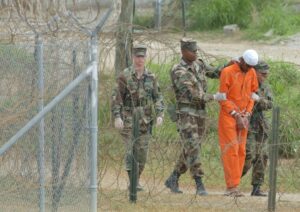
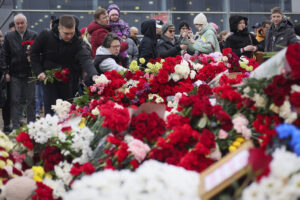
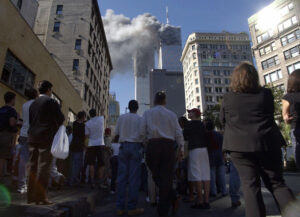
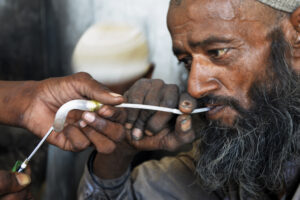
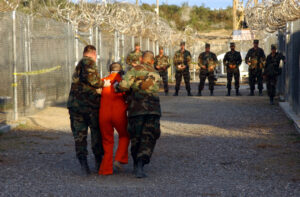
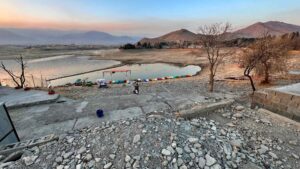
You need to be a supporter to comment.
There are currently no responses to this article.
Be the first to respond.